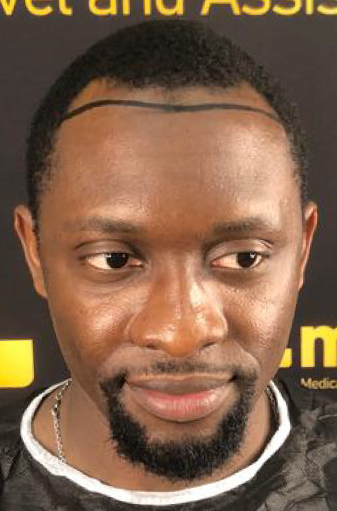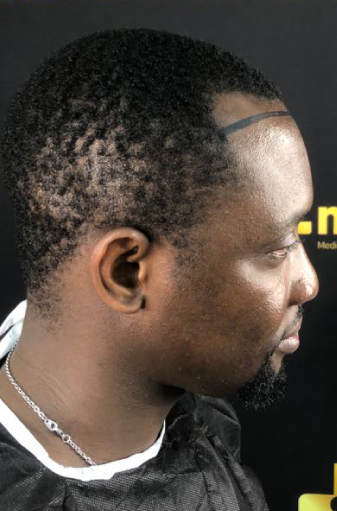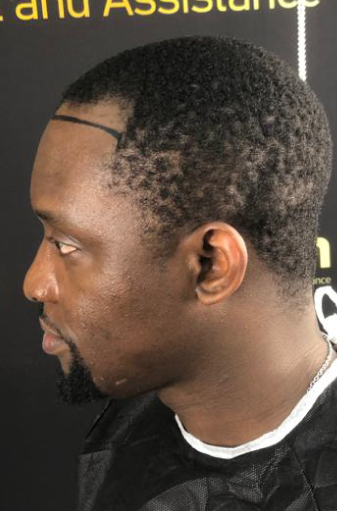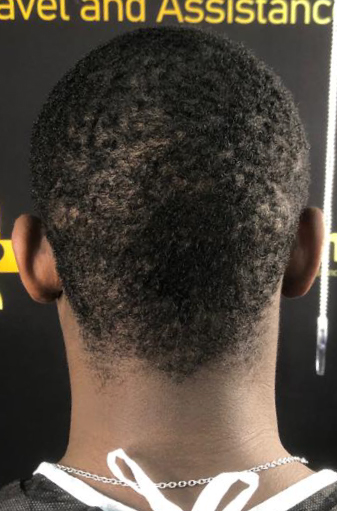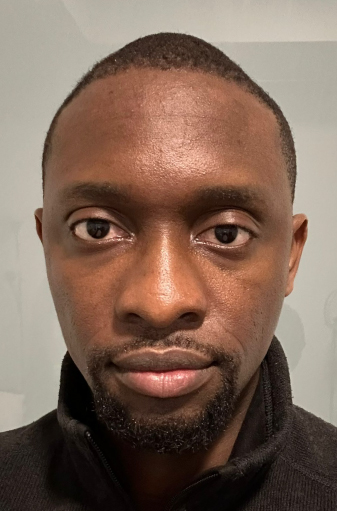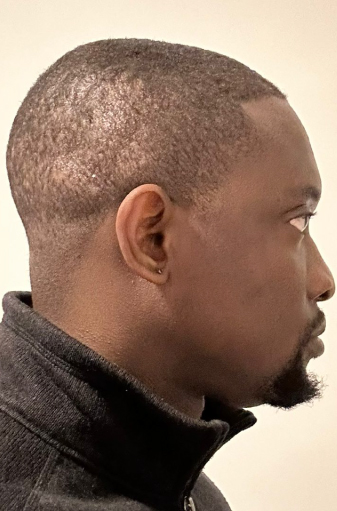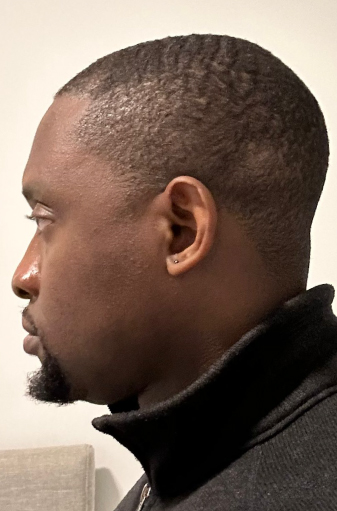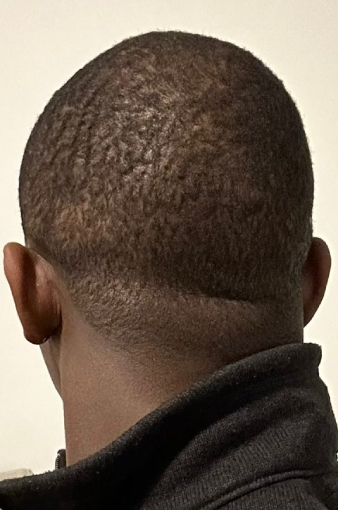Oluwatobi’s Hair Transplant
Case Study
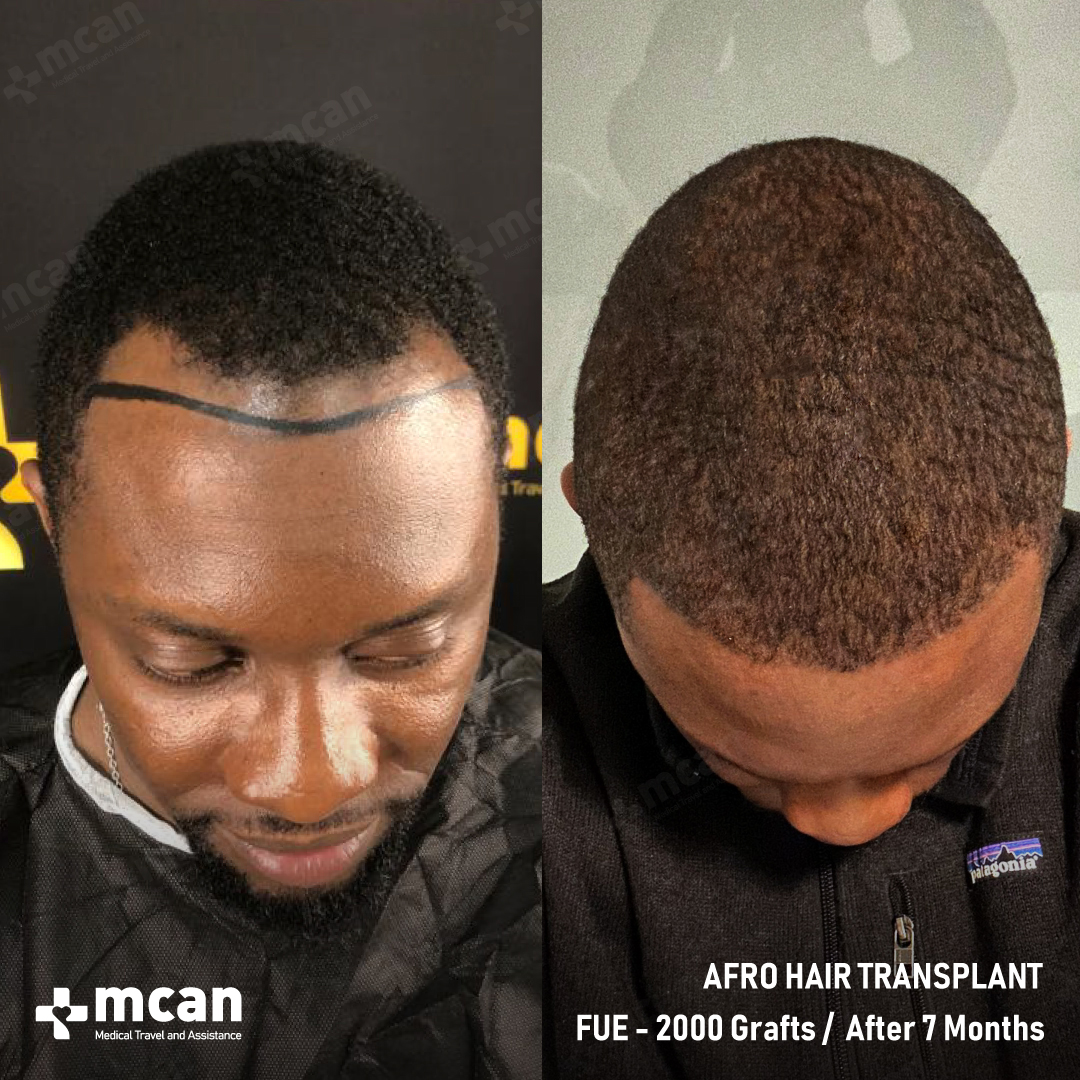
Case Overview
Oluwatobi, a 35-year-old male from Canada, was experiencing early-stage androgenetic alopecia, classified as Norwood Scale 2. His hair loss was located in the frontal hairline with slight thinning in the temporal regions. Having an afro-type hair, he was likely to face challenges due to the curly pattern above and below the scalp. His donor area had enough density to provide a sufficient source for graft extraction. A total of 2000 grafts were harvested using the Follicular Unit Extraction (FUE) method which requires expertise for patients with afro-textured hair. That is why Oluwatobi preferred MCAN Health for his afro hair transplant procedure in Istanbul.
| Norwood Scale: | 2 |
|---|---|
| Grafts: | 2500 |
| Technique: | FUE |
| Donor Strength: | Moderate |
| Hair Type: | Kinky |
Problem
Oluwatobi’s hair loss was characterized by a receding hairline which indicates Norwood Scale 2 male pattern baldness. This early-stage hair loss, because of the patient’s afro hair type, required careful consideration and expertise. Afro hair follicles are naturally curved which makes them more challenging to extract and transplant without causing damage. This situation makes it necessary for surgeons to be precise and preserve the integrity of the hair follicles.
Solution
After a detailed evaluation, the Follicular Unit Extraction (FUE) technique was selected as the best option for Oluwatobi’s hair restoration. FUE is particularly advantageous for patients with a receding hairline and those with unique hair types, such as afro-textured hair, as it allows for individual follicular units to be extracted and transplanted with minimal scarring.
During this operation, surgeons harvested 2000 grafts from the donor area. Due to the curly nature of his hair follicles, extra care was taken during the extraction process to protect each graft. Then these grafts were carefully implanted into the thinning areas of the frontal hairline.
His post-operative care consisted of detailed instructions designed for his specific hair type along with antibiotics to avoid infection. He was also given instructions about his 12 to 18 months of regrowth period.
This case highlights the importance of specialized expertise in performing FUE hair transplants for patients with afro hair to protect the hair’s unique characteristics while securing a natural look.
